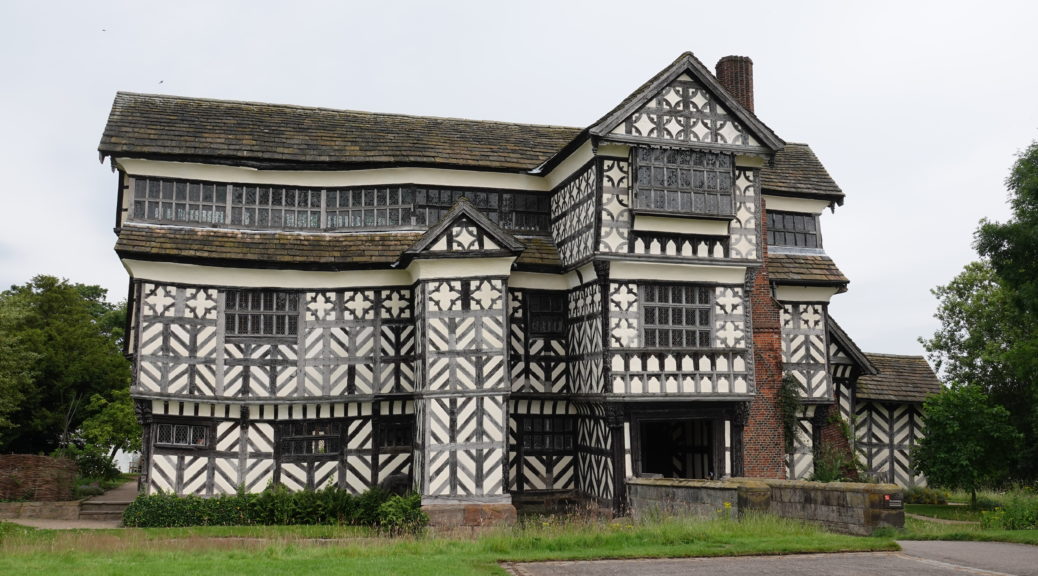
Little Moreton Hall
Last night when I went out for a walk, I noticed a lot of different butterflies and birds. I saw kestrels, pheasants…
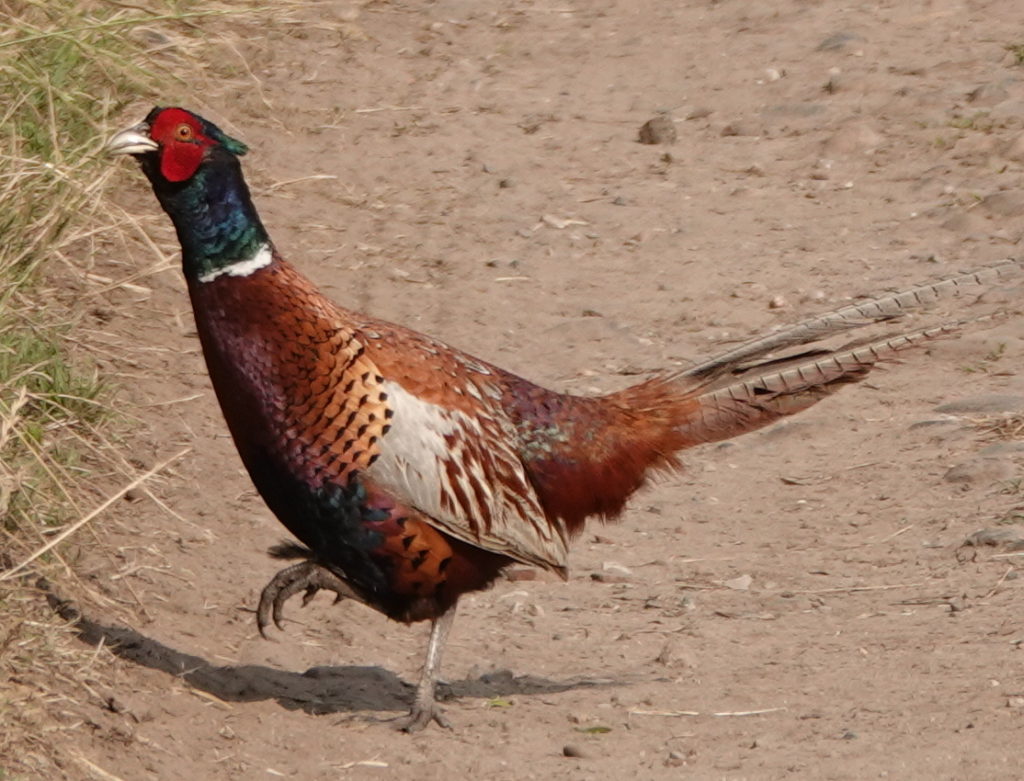
… goldfinches…

… thrushes bobbing through the pastures…

and several kinds of butterflies.
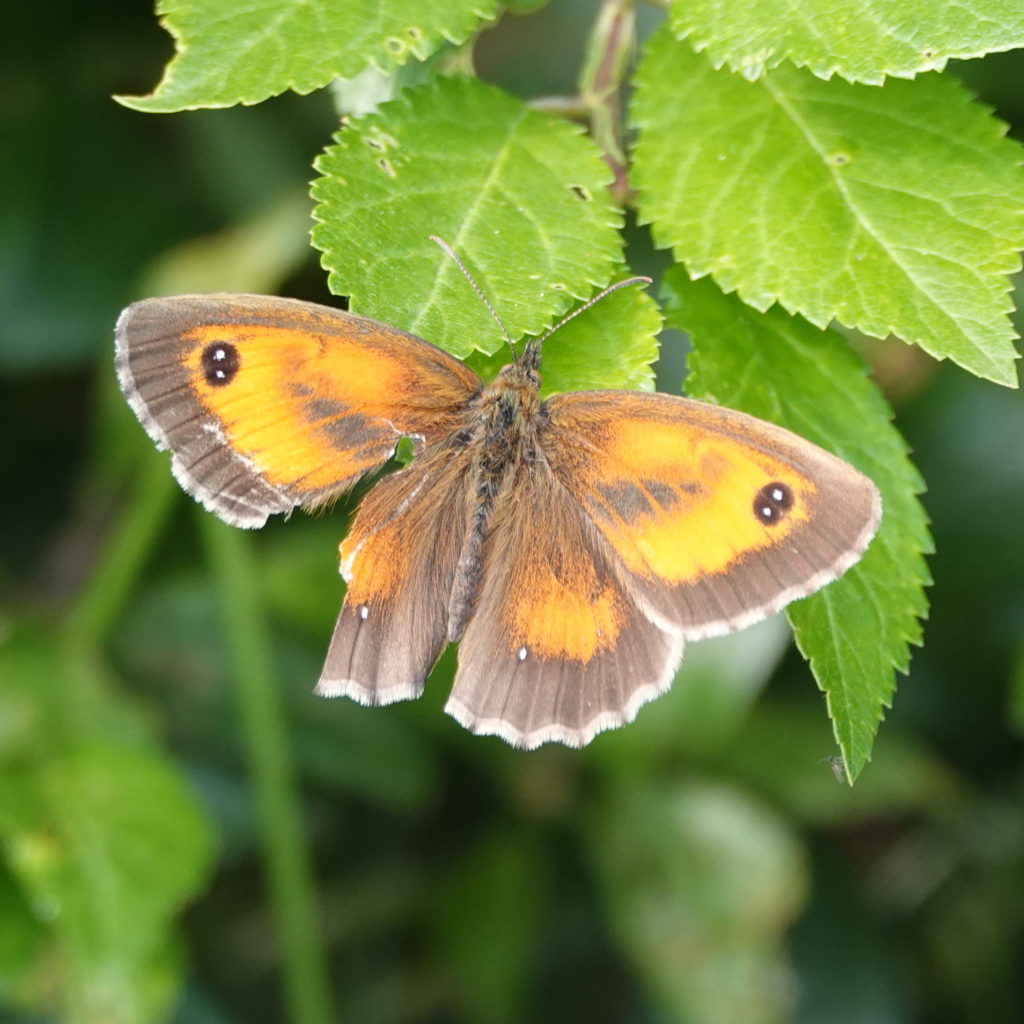


It turns out that the land is part of an organic dairy farm…

… so it looks as if not using pesticides is visibly improving biodiversity.
This morning we walked through the fields again, pausing to chat to the cows…

… to get to Little Moreton Hall.

It’s one of the best preserved Tudor homes in the country, mostly because it was abandoned by the Moreton family after the English Civil war, and used as agricultural outbuildings for two hundred years. In Victorian times the last of the Moretons (a nun) took her inheritance and restored the place, and left it to a priest (and later bishop) friend of hers. He presented it to the National Trust in 1938.
It’s also the crookedest house I’ve ever been in.
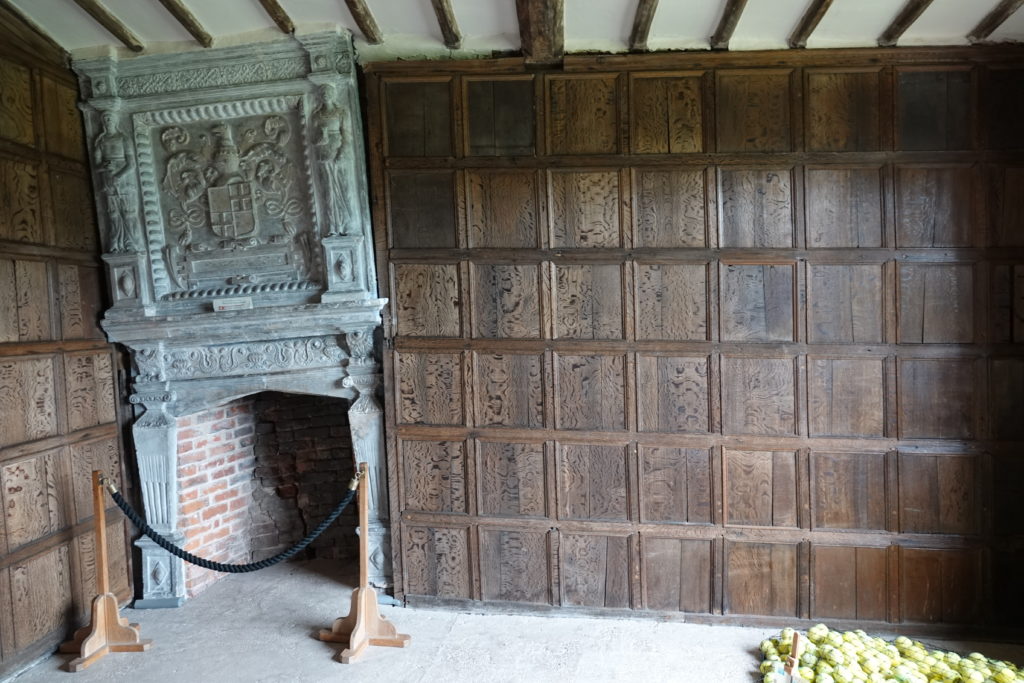
The fireplace is actually vertical, but the walls and floor slope. Paula found this room so upsetting she couldn’t stay in it.
All Tudor oak houses are crooked as they were built with green oak which warped as it dried, but this one was build without foundations on marshy ground.

After growing round three sides of a square courtyard in the 16th century, they finally decided to add a long gallery on the third story.

It rested on rafters that were never supposed to support that much weight, and bits of it sank at different speeds.

The National Trust had to take much of the top story apart to add massive steel supports to preserve the long gallery.
Though the Moretons were not nobility they were quite wealthy, and the huge windows were a display of wealth.

The wood carving says, “GOD IS AL IN AL THINGS. THIS WINDOVS WHIRE MADE BY WILLIAM MORETON IN THE YEARE OF OURE LORDE MDLIX.” That’s 1559 in modern currency. The Moretons were not big on spelling.
Glass was very expensive, and most Tudor houses would have had oiled cloth in their “wind holes” or just shutters.

Most of the individual pieces of glass have been replaced over the centuries, but here are some of the surviving bits of 16th century stained glass.


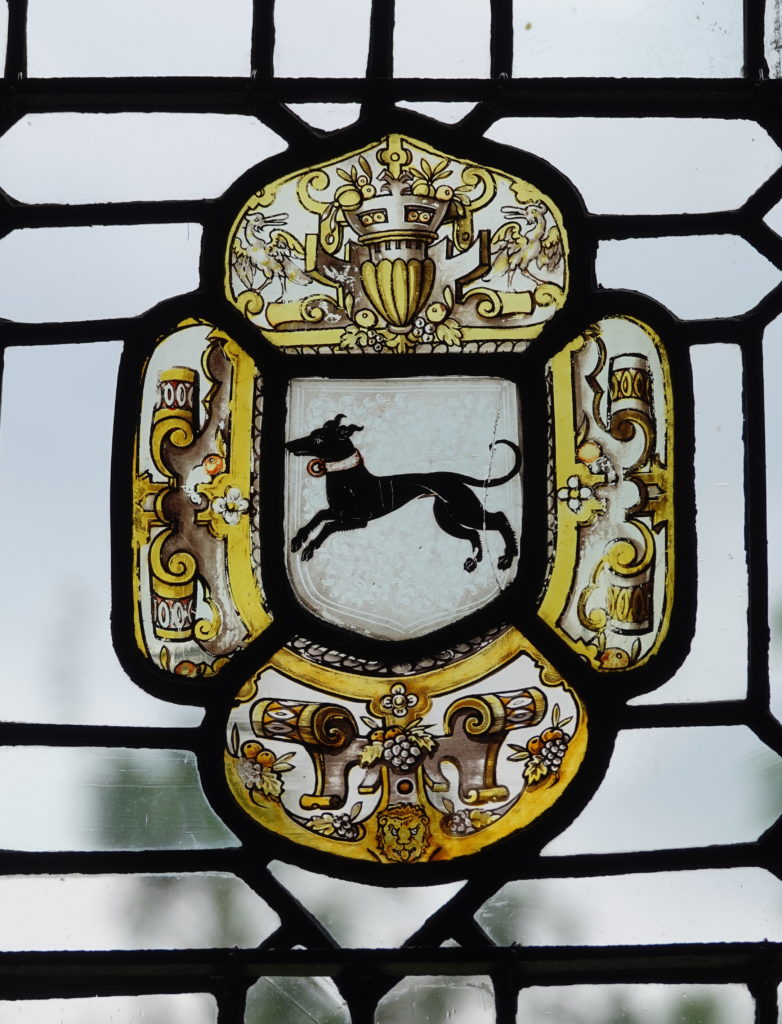

The last one is a rebus, a picture puzzle. A gaping mouth is a maw and a barrel of beer is a tun. Maw-Tun = Moreton, if you’re not big on spelling.
There are some great details in the wood carving, too. Everybody loves dragons.

There’s a great pair of guards by the main entrance.
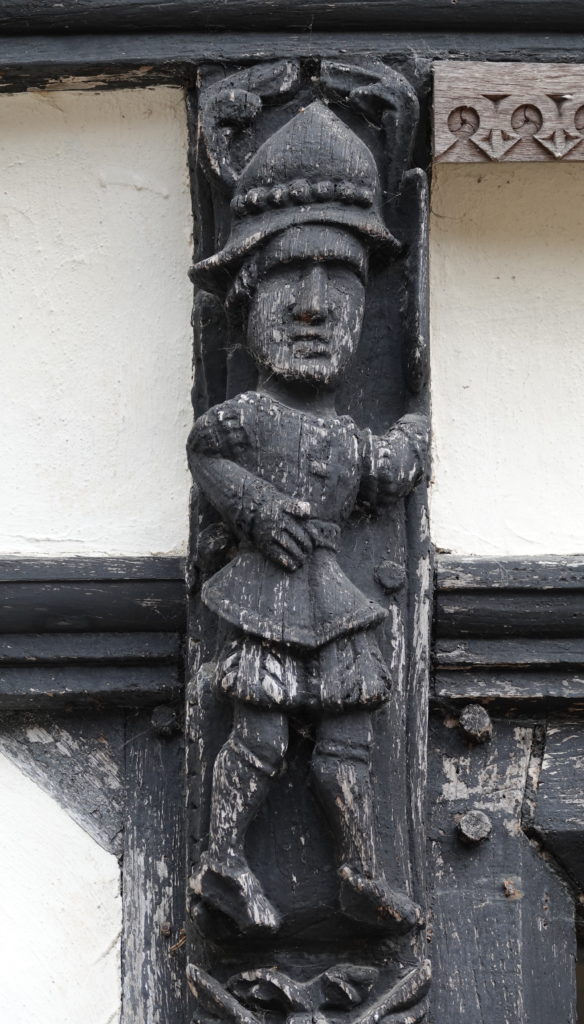

The Moretons liked greyhounds. They were in the stained glass, too.
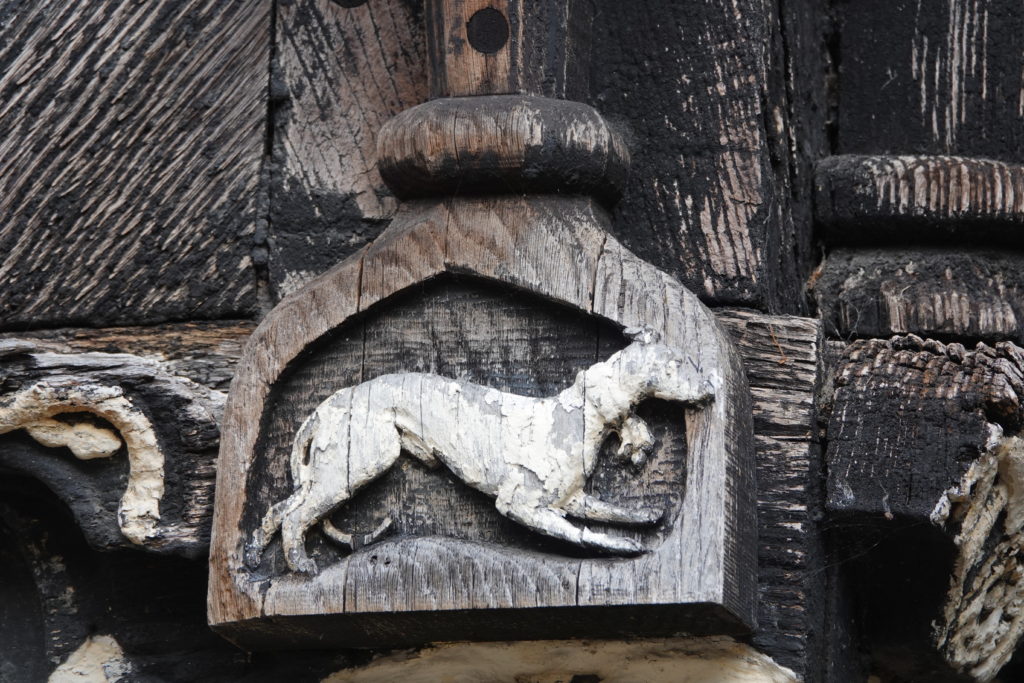
If you’ve never actually seen a lion they might look like this.

One room has wall paintings from 1580, or so. They were covered up with panelling and rediscovered in the 20th century when the National Trust was planning to convert that room into an office.
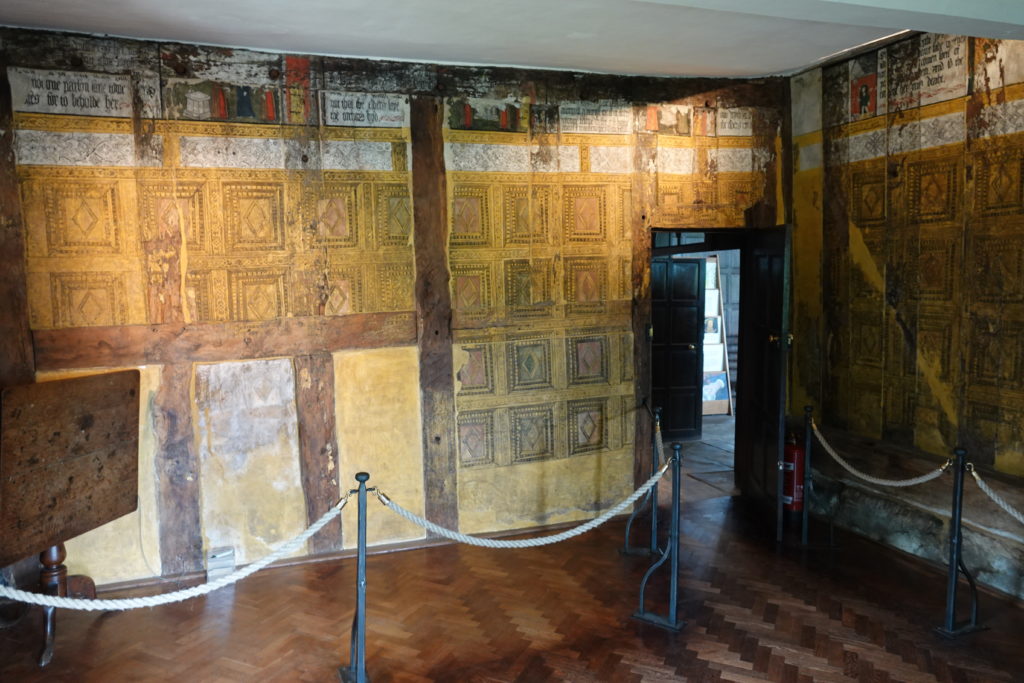
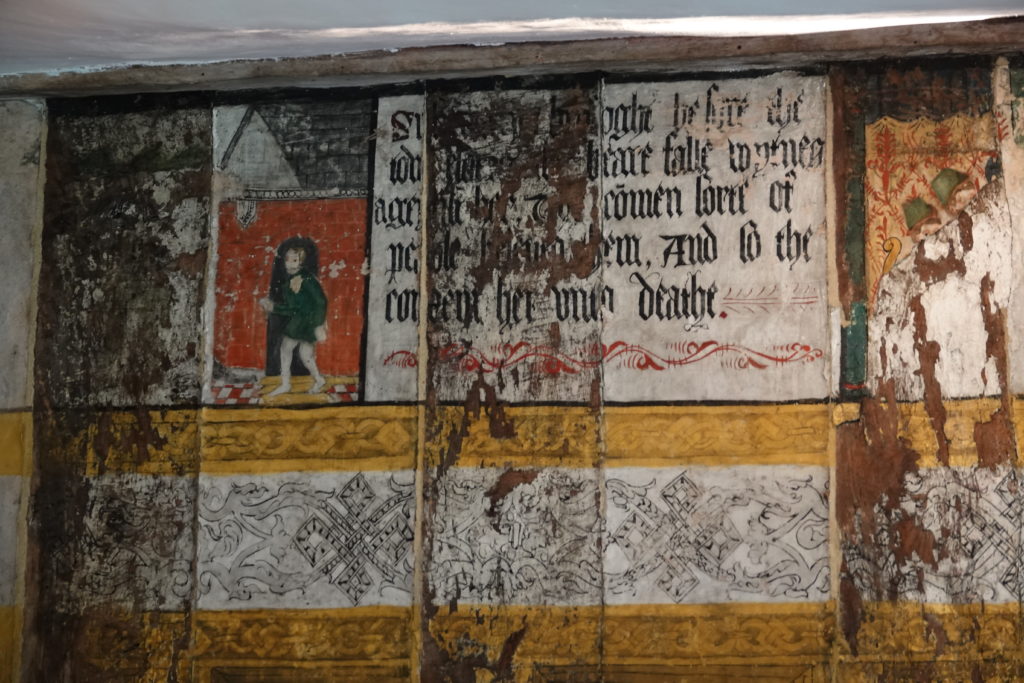
There is some interesting plasterwork as well. Elizabeth I’s coat of arms over a fireplace.
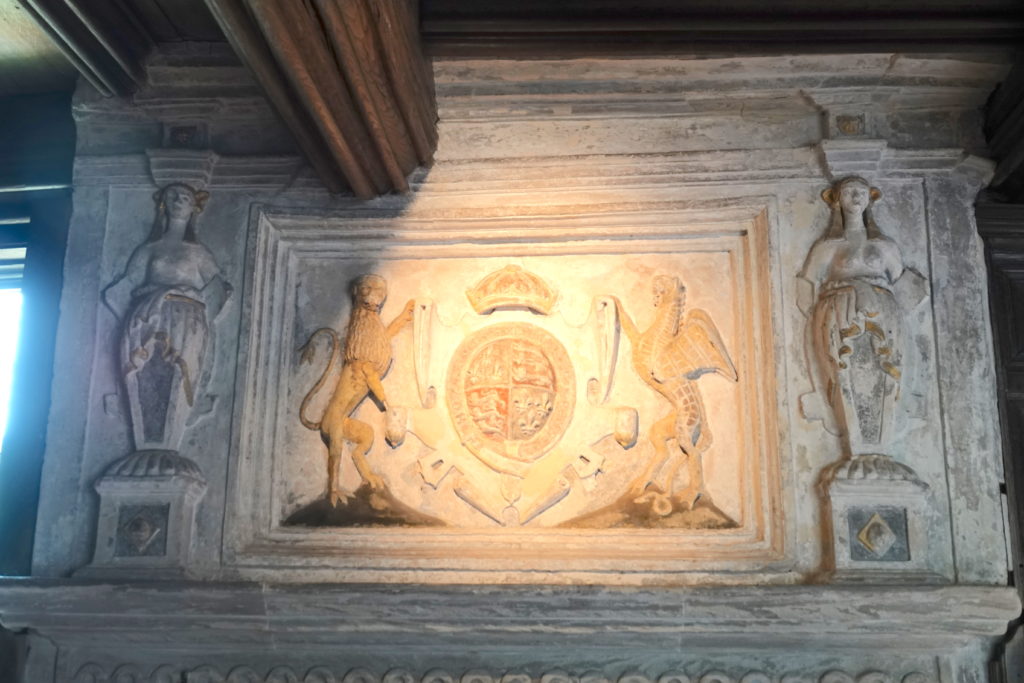
The Wheel of Fortune at one end of the long gallery…
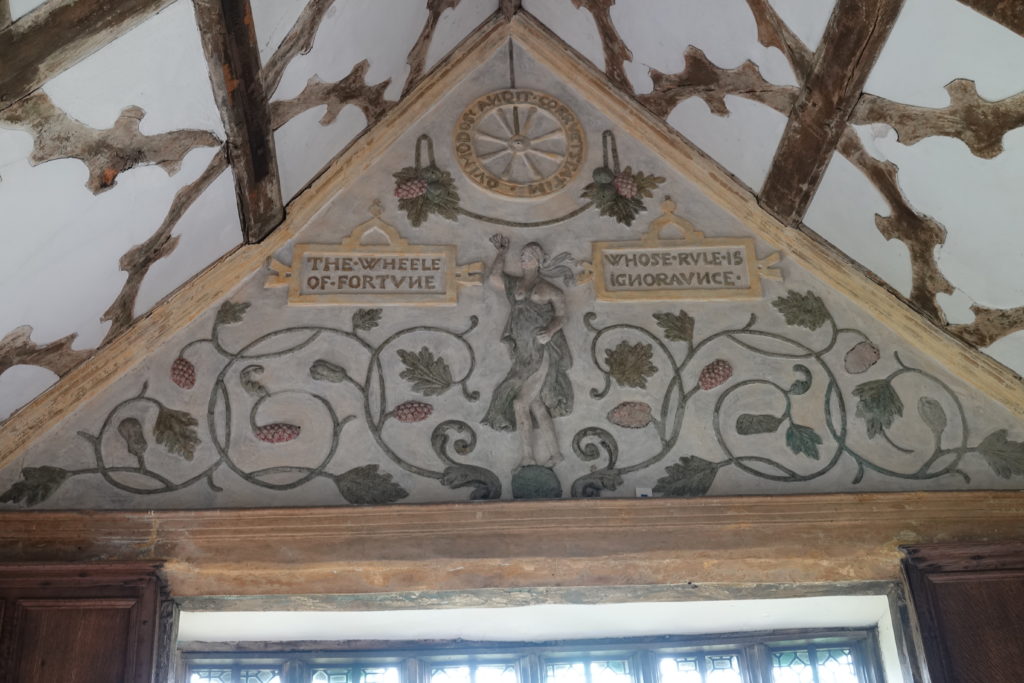
… and the Sphere of Destiny at the other.
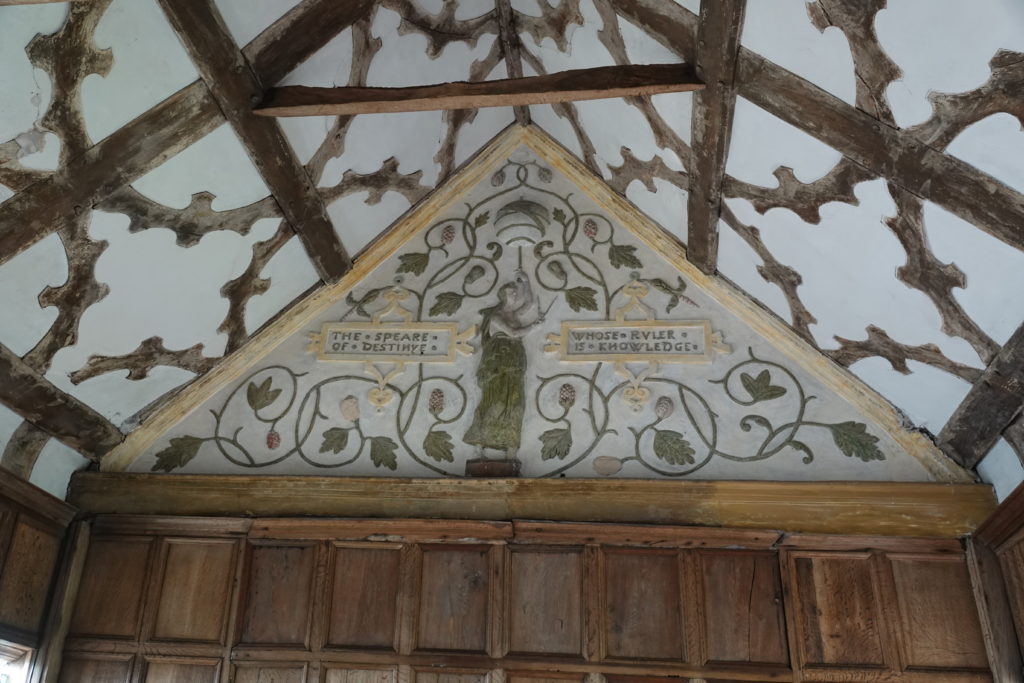
Unfortunately (remember I said the Moretons were not big on spelling) the plasterer decided it was the Speare of Destiny. The two illustrations were cribbed from the frontispiece of a book by Robert Recorde.
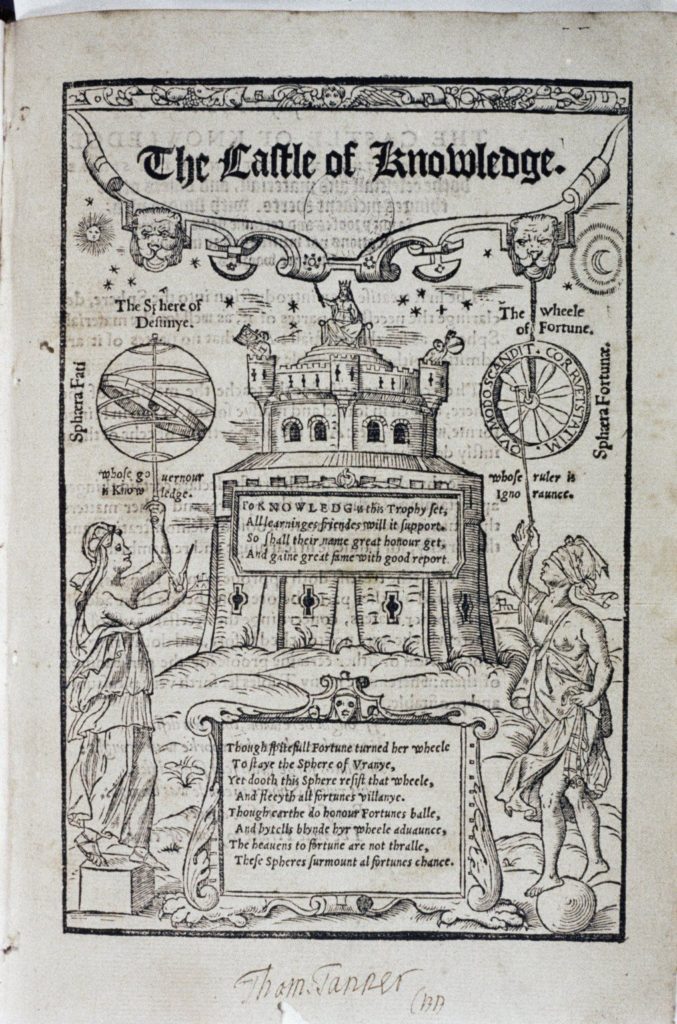
Robert Recorde was better at spelling (in spite of being a mathematician). His sphere has an H in it. He wasn’t very good at writing, however, so to save having to write “is equal to” every time he set down a formula he invented the equals sign.
We had lunch on the lawn, where I amused myself by kicking the ducks who were trying to steal our sandwiches, and then took a turn around the garden.






This afternoon we cruised a few miles into Congleton, which we will explore tomorrow.
2 thoughts on “Little Moreton Hall”
Good one Andrew. Are those formal boxwood hedges appropriate to the period? And am I imagining things or was that pie-faced lion happy to see you?
Yes, the Elizabethans liked “knot gardens” with hedges and plantings in a very formal pattern. The original Little Moreton Hall may have had a herb and kitchen garden here, though, rather than something ornamental. Though, thinking about it, they were into conspicuous consumption (the glass windows, the long gallery) so they may well have decided to use that valuable agricultural space for a formal garden just to show off. There are very few written records of the family apart from the occasional probate document, so we don’t really know that much about their daily life apart from what the building tells us.
As for the lion, no comment.